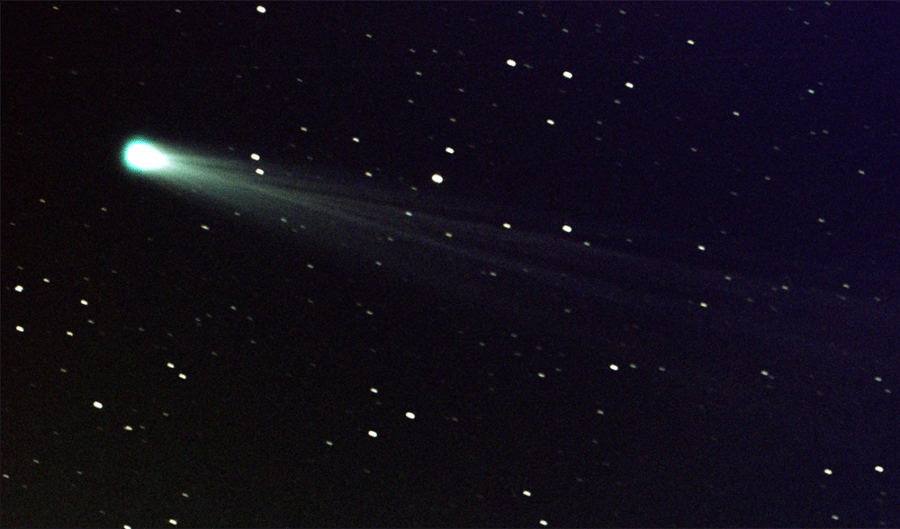Comet set to hit our skies this summer

FOR AMATEUR ASTRONOMERS up for a challenge this summer, a comet is heading into our skies and will be visible around sunset from now until February next year.
This periodic comet, called Comet 45P/Honda-Mrkos-Pajdušáková, has a 5.25 year orbit and has regularly passed the Earth on its journey around the Sun. Last spotted at the end of 2011, it’s is back this year and will be visible between now and February 2017, brightest around New Year’s Eve and early January.
Dr Vanessa Moss, an astronomer at the University of Sydney, has said you will need binoculars (10×50 for example) or a telescope to view the comet.
WARNING: Do not attempt to search for the comet with binoculars or a telescope before the Sun has fully set or after it has begun to rise. The comet’s close proximity to the Sun means that an accidental glimpse of the Sun is probable, which will cause blindness or permanent eye damage.
“From what I can tell, it’ll be a little tricky to view in Australia,” Vanessa said. “Even though it’s in the southern sky, it’s highest during the day, and as it gets brighter it will be setting closer and closer to sunset because it’s getting nearer to the Sun.”
You should be able to spot the comet low on the western horizon at sunset, less than 15° above the horizon in the constellation of Capricornus. Vanessa suggests heading somewhere dark “with a good pair of binoculars and a steady hand!”
The comet, formally known as 45P/Honda-Mrkos-Pajdušáková, is named after the three people who discovered it. First spotted in 1948, this will be the 12th time it has been observed (it was not observed in 1959 or 1985). The comet is relatively small, with a nucleus (core) around 1km across, compared to that of comets McNaught (roughly 20km across) or Hale-Bopp (roughly 35km across).
It will be potentially visible in most places around the world and the further north of Australia you go, the longer it will be in the sky after sunset, which makes it easier to view.
For the best chance of a sighting make sure you have a clear view of the western horizon, without any trees or buildings to obscure your view, as the comet will be passing quite low. You might also want to invest in a pair of binoculars on a stand, so that you don’t have to rely on steady hands.
“Since you can’t see it with your eyes, people will have to use its position relative to the stars of Capricornus to track it down. An app such as Stellarium will be very helpful here!”
If you want to view the comet through a telescope, check with your local observatory to see whether they’re running any events or viewings for 45P/Honda. Sydney Observatory has reported that it will be keeping an eye (or a telescope) out for potential sightings.
READ MORE:
- Meteor strike reported off Queensland coast
- This is what it looks like on a comet
- Australia’s best meteorite craters

